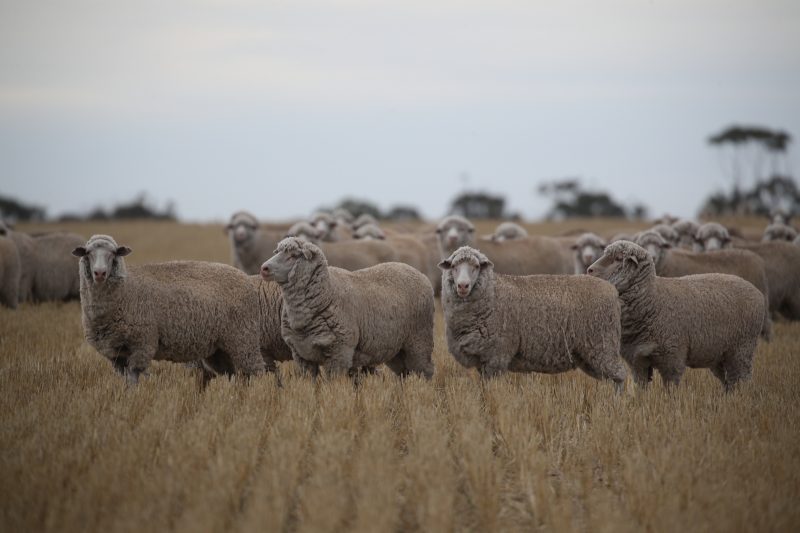Dohnes Push Gross Margin In Low Rainfall
Article courtesy of Kim Woods OutCross Media. Photo courtesy of Ben Simpson.
“The Dohne is the most profitable in varied locations, which is not surprising given their dual purpose nature”.
HEAVIER CARCASS weights, lambing ease and higher marking percentages of Dohne sheep have resulted in a gross margin more than comparable with cropping for South Australian farmer Chris Curnow.
Chris and his wife Ann farm 600ha at Avon, on the Adelaide Plains, and run a flock of 700 Dohne ewes in conjunction with a cropping enterprise.
The Curnows are members of a Sheep Connect sponsored benchmarking group, and have a handle on just how profitable their Dohnes are. The flock generates a wool income of $387/ha, livestock
trading income of $480/ha and a gross margin of $350/ha. Set in a 320mm rainfall zone, the sandy loam country supports pastures of oats, vetch and clover for the sheep.
Around five years ago, Chris and Ann made the switch from a selfreplacing Merino flock to Dohnes on the recommendation of their sheep consultant. Chris was searching for
an efficient, fertile, dual purpose ewe and decided to conduct an on-farm comparison trial between Merino and Dohne-Merino cross lambs. “We compared the body and fleece weights, and found the Dohnes had a 10kg liveweight advantage at shearing,’’ Mr Curnow said.
A focus on nutrition for both rams and ewes prior to joining, combined with pregnancy scanning for multiples / singles and ewes crutched prior to lambing have resulted in lamb marking of 124 per cent. “Ewes are fed lupins and barley prior to joining to maintain their body condition score at 3.5-4 while rams are supplemented with 750grams a day of lupins for six weeks before joining,’’ Mr Curnow said.
Ewes scanned with multiple lambs are preferentially fed grain and adlib hay in a containment area up to a fortnight before lambing in June.
All lambs are shorn in April with the wethers finished in an on-farm containment feedlot for 10 weeks. They are drafted into two mobs of 32-45kg or 45kg plus liveweight and fed on barley (80 per cent), lupins and pellets. The finished lambs are sold over-the-hooks to Thomas Foods International, with a consignment last June averaging 25.2kg dressed weight, and returning $170.15
(including a $7 skin).
Their 18 micron fleece sold for 1081c/kg greasy (1855c/kg clean), had a yield of 58 per cent, staple length of 70mm and tensile strength of 26 Nktx.
Surplus sheep sales have been strong for the Curnow family, with classed-out hogget Dohne ewes (around 30 per cent) selling in 2017 for $138 on AuctionsPlus. Dry ewes
were sold off-shears to average $160 and 32.4kg dressed weight.
A former shearer, Mr Curnow likes a bright, white fleece on a soft, supple skin. He is working to maintain average fleece weights in the adult ewes of 5kg, along with yield, tensile strength and comfort factor. The last consignment of wool from the ewes averaged 20.4 micron, yielded 60.2 per cent, had a staple strength of 36 Nktx, and sold for 886c/kg greasy (1472c/kg clean).
CHRIS AND ANN CURNOW Avon, Adelaide Plains South Australia

The Curnows aim for a moderate framed, efficient and fertile Dohne ewe cutting an average of 5kg of 21 micron wool, and raising multiple lambs to weaning.










 Facebook
Facebook YouTube
YouTube Instagram
Instagram